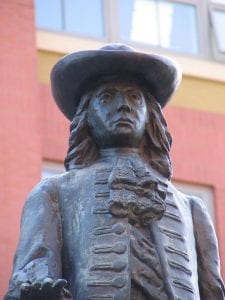Quaker Funeral Service Rituals
 Quakers are also known as members of the Religious Society of Friends and tend to have very simple funerals. Funerals are called Meeting for Worship in Thanksgiving for the Grace of God, as shown in the life of (e.g.) Jane Smith. The primary emphasis of a Quaker funeral is twofold – to honor the life of the person and to experience God’s presence. There is no uniform agreement on life after death, so the emphasis is likely to be on the person’s life.
Quakers are also known as members of the Religious Society of Friends and tend to have very simple funerals. Funerals are called Meeting for Worship in Thanksgiving for the Grace of God, as shown in the life of (e.g.) Jane Smith. The primary emphasis of a Quaker funeral is twofold – to honor the life of the person and to experience God’s presence. There is no uniform agreement on life after death, so the emphasis is likely to be on the person’s life.
In the Quaker tradition, the congregation meets in a plain building known as a meetinghouse, and there are no ministers, as Friends (another name for Quakers) believe all are equal before God. Quaker meetings (or churches) form rather loose relationships with other meetings and retain their autonomy in most matters. As such, particular traditions may vary from meeting to meeting. Because many people who will be present are likely not Quakers, there will often be an explanation at the beginning of the service or in a printed program as to what to expect.
In general, Quaker funeral services are similar to any Meeting for Worship (the Quaker term for “services”). An elder of the meeting may welcome those gathered and read a poem, scripture, or other material. There may be music, either instrumental or hymn singing, depending on the traditions of the meeting. Typically, there is no set ritual and no sermon, though there may be a brief eulogy.
One of the most distinctive aspects of a Quaker’s funeral is the opportunity for anyone who feels moved by the spirit to give a spoken message or prayer. This time, often called “Open Worship,” is a period of silence where family and friends may, as they feel inspired, give their own messages and thoughts to the family and the rest of the group. All are welcome to speak, regardless of age, gender, or faith tradition.
At the service’s close, there may be a closing prayer or song, or an elder near the front of the meeting will turn and shake hands with his or her neighbor, which is a signal that the Meeting for Worship has concluded. You are encouraged to do likewise, and then the funeral ends informally. Ushers will not dismiss you, and you are free to leave quietly or speak to the deceased’s family and friends.
After the funeral, those who gather are often invited for a light meal at the meetinghouse. If a person is not cremated, the burial service may immediately follow the funeral, and all funeral guests may attend. A burial service is typically very brief, with a prayer, Scripture reading, and a moment of silence.
Typically, funerals are held within one week of death but maybe weeks or even months later. The funeral service is about 60 to 90 minutes in length. In keeping with the tradition of simplicity, many Quakers choose cremation, and it is rare for the deceased person’s body to be present. If cremation is chosen, a framed photograph of the person is often in the meetinghouse on a small table. Monetary donations are often given in lieu of flowers. If no organization is suggested in an obituary, then a memorial gift to the person’s meeting would be appropriate.
Visiting or contacting the family to offer condolences before and after the funeral is appropriate. Guests who are not Quakers can fully participate in the funeral service. Professional or “church” attire is appropriate, although some will likely be less formally dressed. Wearing black is not expected. No head covering or special clothing is required.
| Quaker Quick Reference Guide | |
|---|---|
| Length of Service | 60 – 90 minutes |
| Flowers? | Varies (See our Sympathy Flowers) |
| Food? | Women’s groups usually supplies |
| Dress Code? (Men/Women) | Business |
| Recording Devices? | Voice Recorder – only if done discreetly |
| Source of Readings? | Scriptures & Hymnals |
| Open Casket? | Rarely |
| Return to Work? (Days) | Depends |
| No. of Days to Mourn? | Depends |
| Embalming? | Accepted |
| Cremation? | Up to the individual |
| Body/Organ Donation? | Accepted |
